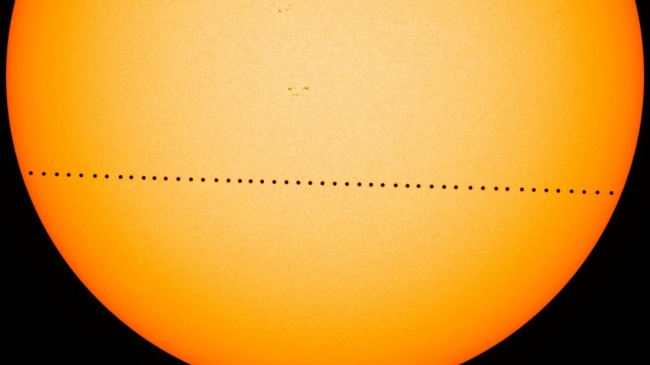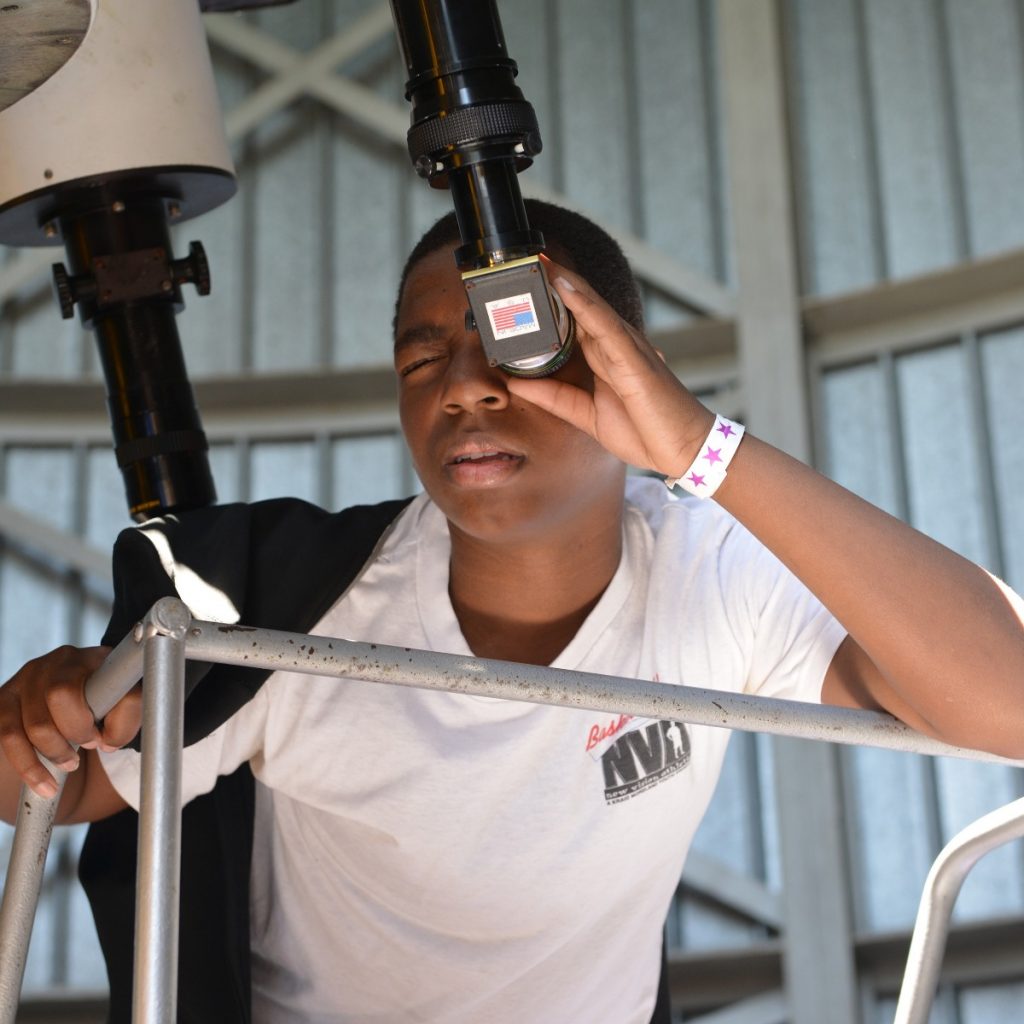Understanding Planet Transits

Header Image: Composite image of the transit of Mercury as seen from Earth on May 9, 2016. Image Credit: NASA’s Goddard Space Flight Center/SDO/Genna Duberstein
What is a Planet Transit?
Every now and again, Earth lines up with one of our neighbor planets so perfectly that we can watch the planet travel across the face of the Sun when we peer through a solar-safe telescope.
Pretty amazing, right?
What’s even more amazing is how rare these types of celestial events are. From Earth, we can only see two planet transits: Mercury and Venus. This is because they are the only two planets in our inner solar system between our home planet and the Sun.
Venus transits are the rarest—happening twice every 108 years. The most recent transit of Venus was back in 2012. The next one doesn’t occur until December 2117.
Mercury transits are more frequent, happening about 13 times a century. The next one happens very soon, on November 11, 2019! After that, we’ll have to wait 30 years until the next transit of Mercury, which won’t be visible in Chicago until 2049.
Why Do Planet Transits Matter?
In 1639, about a hundred years after humans discovered that the Earth was not, in fact, the center of the Universe, that planets actually orbited around the Sun, and the Earth was part of a vast Solar System, two Englishmen named Jeremiah Horrocks and William Crabtree observed the transit of Venus.
This transit of Venus was the first to ever be observed by the human eye. Horrocks and Crabtree did so because they had predicted that by using basic geometry they would be able to calculate the distance between the Sun and Earth. Thanks to the law of cosines, they knew that if they knew one angle of a triangle and one side of a triangle, they would be able to work out all the other parts. They were able to estimate the distance between the Sun and the Earth within 2/3rd accuracy.
In years to come, astronomers would continue to observe each transit of Venus, refining their calculations, and eventually settling on the current distance of approximately 150,000,000 km (~93,000,000 miles).
The work of Horrocks and Crabtree on planet transit calculations was a turning point in the journey “from the classical astronomy of documentation and tabulation to the modern idea of observation, prediction, and comprehension.”
Planet Transits Beyond Our Solar System
Planet transits are not just useful in calculating the geometry of our own Solar System. Observing planet transits are also one way astronomers discover and calculate exoplanets in other parts of the galaxy. Space telescopes, like Kepler Space Telescope, help as part of this process because viewing planets dozens of lightyears away from our own is difficult. Their brightness pales in comparison to stars.
With Kepler, scientists are able to explore parts of our galaxy that wouldn’t be otherwise explorable from Earth. They use transit photometry to measure the minute dimming of a star as an orbiting planet passes between it and Earth. If the dimming occurs at regular intervals, then it can be discerned that a planet is probably orbiting the star.
See a Planet Transit For Yourself!

You can join us here at the Adler Planetarium as we come together to watch the upcoming transit of Mercury on Monday, November 11. This is a free event, weather-permitting event. We’ll have Adler astronomers on hand to ask questions and solar-filtered telescopes available to watch Mercury as it passes by the Sun. If you’re in the Chicago area, stop by!






